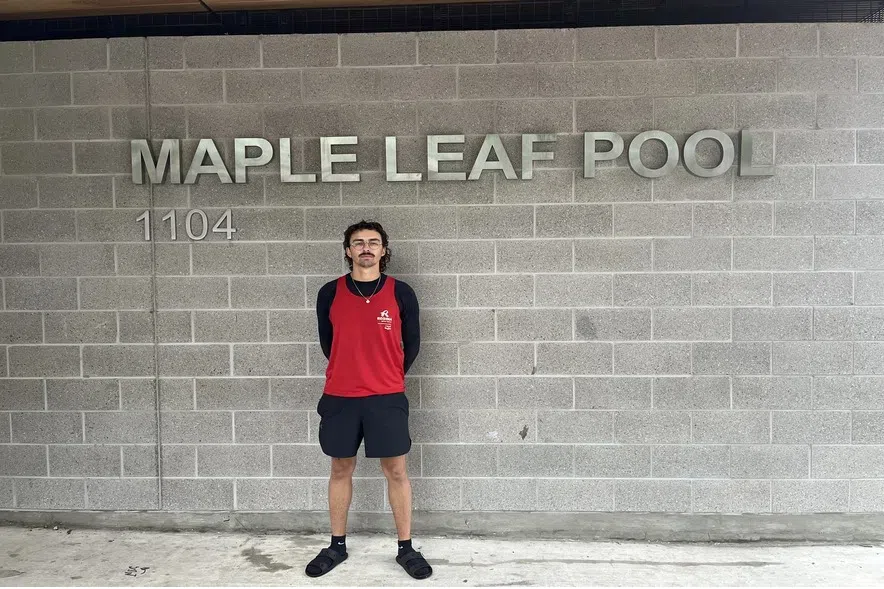Most of the drowning deaths in Saskatchewan this summer have been at a lake where there is no lifeguard on duty.
But there are ways people can stay safe while still having fun out on the water.
Rylan Jensen is a lifeguard and the manager of Maple Leaf Outdoor Pool in Regina. He said lifeguards have to have their lifeguarding course, a standard first aid course, and a swimming instructor course in order to be certified.

Rylan Jensen is a lifeguard and the manager of Maple Leaf Outdoor Pool in Regina. (Kaleb Sebastian / 980 CJME)
“A lot of it is hands-on. In our first aid courses we go through scenarios. We go through (the) textbook (and) how to react in certain situations (and) certain steps and procedures that you follow,” Jensen said.
“When it comes to the actual guarding portion, it comes down to spinal removals, removals out of the water. Again, with scenarios and just practicing different things that we might encounter.”
Jensen said lifeguards that work for the City of Regina have to get recertified every two years, whereas non-city lifeguards recertify every three years.
Read more:
- Lifesaving Society urges caution after recent deaths on Sask. lakes
- Drowning prevention week: How to stay safe on the lake
- More than $20,000 raised for Waskesiu Lake drowning victim
So how does a lifeguard know if someone in the water is in need of help?
“If they’re frantic. If their arms are splashing around, if they look very uncomfortable. Sometimes if they’re just floating there upside down.
“A lot of the time, though it’ll be that frantic reaction — they jump in the pool and they realize, ‘oh no, I can’t get to the edge,’ and you can see that discomfort … and deal with that situation,” said Jensen.
He said once a lifeguard sees someone struggling, they gauge the seriousness of the situation.
“Do I need to jump in? Or am I able to toss them a device, and they can get themselves to the edge? Or I can talk them to the edge.
“If neither of those (options) are available, you can either throw a line to them (or) you can pull them in. Worst-case scenario, you would jump in (and) grab them yourself. You want use that as your last option, as it does also put you at risk,” he said.
How can I stay safe swimming in the lake?
The Lifesaving Society says about 24 people drown in Saskatchewan every year. Jensen has some tips on how to stay safe while swimming at a lake without a lifeguard on duty.
1. Wear a lifejacket
Jensen highly recommends wearing a lifejacket, or at least have a flotation device close to you.
“That way, if somebody does need help … you’re able to toss (it) out to them … and then you can bring them back in,” said Jensen.
Lifejacket loaner stations lend out free lifejackets in a range of sizes, from infant to adult.You can find a list of loaner station locations here.
2. Swim with a buddy
Jensen says this is very important. The Saskatchewan Lifesaving Society says on its website that young children aren’t the only ones who shouldn’t swim alone and just because you’re a “good swimmer” doesn’t mean you’ll be able to take care of yourself if you get into trouble.
3. What do you do if you see someone in trouble in the water?
Jensen also has some advice on what to do if you’re at a lake and see someone struggling to swim.
“I would not go in and jump in by myself, because then you’re putting yourself at risk. Use that flotation device — you can toss it out to them. You can throw them a line (and) try to tow them back in.
“Unless you are trained, I would not jump into the water,” said Jensen.
Read more:







